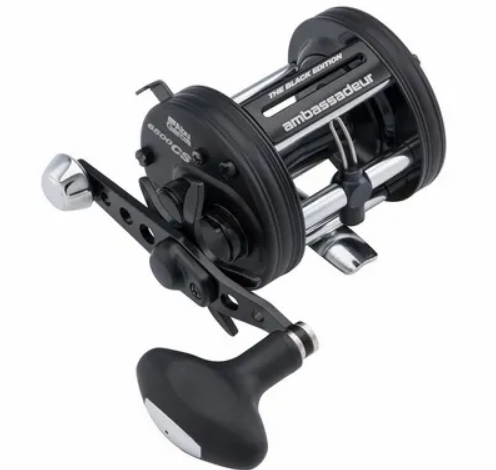Secure The Catch: Tips For Maintaining Your Catfish Rod Holders

When it comes to catfishing, your rod holders are just as crucial as the rods and reels themselves. These tools keep your rods steady while you wait for that prized catch to take the bait. But just like any other fishing gear, catfish rod holders require proper maintenance to ensure they work flawlessly over time.
Neglecting this simple task can lead to unfortunate mishaps like losing a rod or, worse, a fish. To help you avoid these issues, here are some practical tips on maintaining your catfish rod holders.
1. Keep Them Clean After Every Trip
Fishing often involves exposure to water, dirt, and other debris, which can gradually wear down your rod holders. After each fishing trip, it is a good practice to clean your rod holders thoroughly. Use a damp cloth to wipe down all surfaces, removing mud, sand, or any other material that may have accumulated.
For tougher dirt, a gentle soap mixed with water works well. Just be sure to rinse everything off thoroughly and allow the rod holders to air dry.
If you fish in saltwater, this step becomes even more critical. Salt can corrode metal parts quickly, so make sure to rinse your rod holders with fresh water after each use.
2. Inspect for Wear and Tear
Regular inspections can help prevent sudden failures while out on the water. Every few trips, take a closer look at your rod holders. Check for any signs of rust, cracks, or bends in the metal or plastic components.
Pay special attention to the areas where the rod holder mounts to the boat or ground—these points endure the most pressure and are more likely to show signs of wear.
If you notice rust, use a wire brush or some sandpaper to remove it. For plastic rod holders, check for any brittleness, which could indicate that they’re nearing the end of their lifespan and might need replacement.
3. Tighten the Mounting Hardware
Your catfish rod holders for boat must be securely attached to the bank mount to do their job properly. Loose mounting hardware can lead to instability, which might cause you to lose a rod during a strong strike from a catfish.
Before each fishing trip, make it a habit to check the screws, bolts, or clamps that hold your rod holders in place. Use a wrench or screwdriver to ensure everything is tight and secure.
If you notice any signs of wear in the mounting hardware, replace it as needed. Quality stainless steel screws and bolts are a good choice since they resist rust and corrosion, especially if you fish in wet environments frequently.
4. Lubricate Moving Parts
Some catfish rod holders have moving parts, such as swivels or adjustable angles. Lubricating these features periodically is a good idea to keep them operating smoothly. Use a light oil or lubricant designed for fishing gear to prevent rust and ensure that these parts don’t stick.
Avoid using heavy greases, as they can attract dirt and debris, which may cause the moving parts to clog or jam over time. Instead, a few drops of oil applied to the joints and swivels should be enough to keep them functioning properly.
Read also: Keep The Heat On: Essential Benefits Of Professional Boiler Service
5. Store Them Properly
Proper storage is critical to extending the life of your rod holders. After fishing, store your rod holders in a cool, dry place without exposure to harsh elements like excessive heat, moisture, or sunlight.
Prolonged exposure to direct sunlight can cause plastic rod holders to become brittle and metal ones to rust more quickly.
If you have the space, consider mounting them on a rack in your garage or shed to keep them off the ground. This keeps them clean, organized, and free from accidental damage.
6. Replace Worn-Out Components
No matter how well you maintain your rod holders, certain parts will wear out over time. If you notice cracks, warping, or weakened sections, it’s better to replace the component (or the entire holder) rather than risk losing a rod or a fish.
Many rod holders have replaceable parts such as mounting brackets, screws, or swivels. Instead of buying a new rod holder, see if you can replace the worn-out pieces. This saves you money and helps you maintain a dependable setup for your fishing adventures.
7. Invest in Quality Rod Holders
While this tip might seem more relevant when you’re initially purchasing your equipment, it’s important to recognize that high-quality rod holders are much easier to maintain and last much longer.
Cheaper options might save you some money upfront, but they often corrode, break, or become ineffective over time.
Investing in a durable rod holder made from rust-resistant materials like stainless steel or marine-grade aluminum will save you the hassle of constant repairs and replacements. Plus, they’ll be able to withstand the pressure from a hard-fighting catfish without giving out.
Conclusion
Maintaining your catfish rod holders doesn’t have to be a complicated task, but it pays off in the long run. A little routine cleaning, tightening, and inspecting will keep your equipment in shape and prevent frustrating situations while you’re on the water.
At Bottom Dwellers Tackle, we understand the importance of having reliable gear for your fishing adventures. Browse through our premium catfish rod holders collection, designed to withstand the toughest conditions and make your fishing experience smoother.




